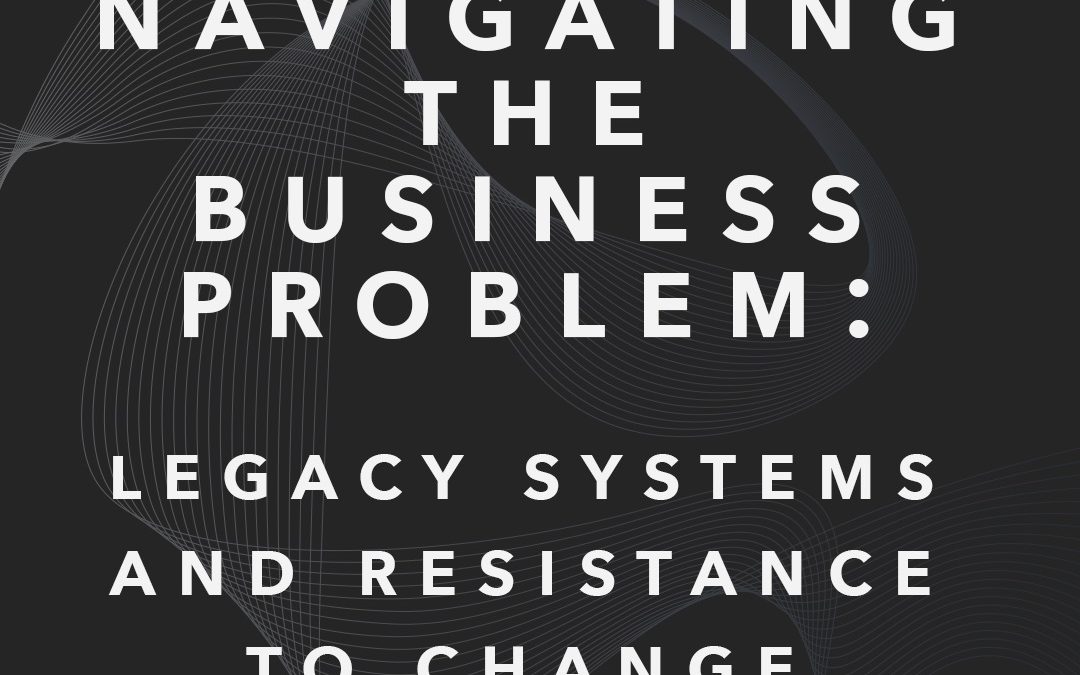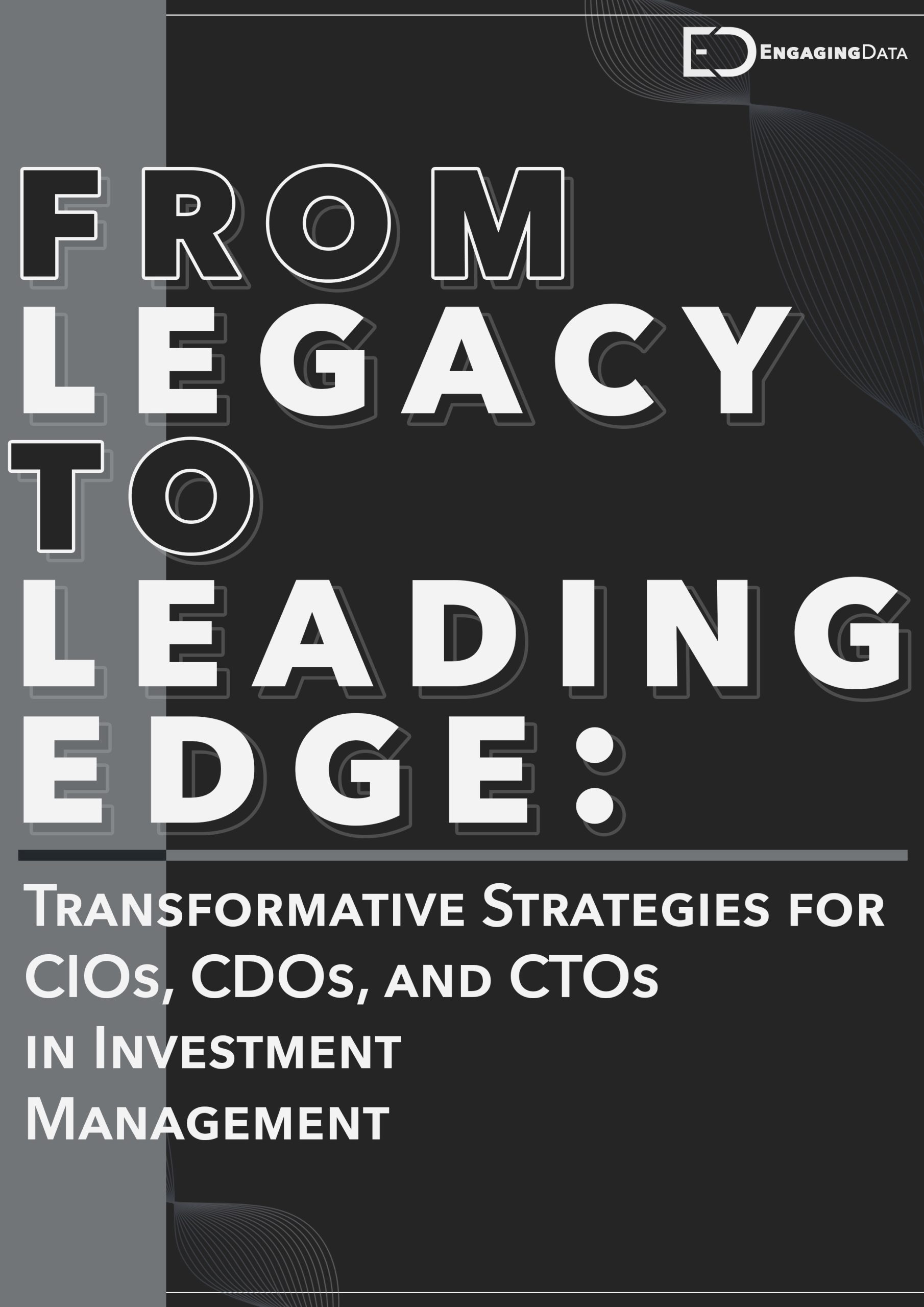Legacy System Survival Guide: The C-Suite Checklist
Legacy systems, while often considered the backbone of an organisation’s technological history, come with their own set of challenges and untapped opportunities.
In the ever-evolving digital landscape, CIOs, CTOs, and CDOs face the dual challenge of preserving the stability of existing infrastructure while strategically navigating the possibilities for future innovation.
Challenges of Legacy Systems:
Legacy systems, characterised by outdated technologies and architectures, can pose obstacles to agility, scalability, and security. Maintenance costs may escalate, and compatibility issues with newer technologies may arise, hindering the organisation’s ability to keep pace with industry trends.
Opportunities within Legacy Systems:
Contrary to common perception, legacy systems harbour hidden values. Their stability and reliability can provide a strong foundation for business operations. Additionally, with strategic planning, these systems can be modernised to align with contemporary demands, unlocking potential cost savings and improved performance.
The Importance of a Strategic Approach:
A strategic approach becomes paramount. Blindly holding onto legacy systems without a well-thought-out plan risks falling behind competitors.
Conversely, hastily discarding them without proper assessment may lead to unnecessary costs and disruptions.
This blog aims to guide C-Suite leaders in striking the right balance – understanding the challenges, leveraging the opportunities, and adopting a strategic mindset when assessing and managing legacy systems. After this, you will be empowered executives to make informed decisions that align with your organisation’s needs and future goals.
Understanding Your Legacy Landscape:
Legacy systems often grow organically over time, becoming a complex web of interconnected components that power an organisation’s daily operations. Before making any decisions about the future of these systems, it’s imperative to gain a deep understanding of your legacy landscape. This involved meticulous examination of the existing infrastructure, focussing on the following key aspects:
Overview of the Existing Legacy Systems:
Begin by conducting a comprehensive overview of all legacy systems currently in use. This involves creating a detailed inventory of software, hardware, and any other components that contribute to the organisation’s technological ecosystem.
Understanding the scope and scale of these systems is the first step in making informed decisions.
Identification of Critical Components and Their Functions:
Not all components within a legacy system are created equal. Some may play a mission-critical role in daily operations, while others might be redundant or obsolete. You should identify and prioritise critical components, understanding their specific function and the impact their potential modification or replacement may have on overall system performance.
Documentation of Dependencies and Integrations:
Legacy systems often rely on a network of dependencies and integrations with other applications and platforms. Documenting these dependencies is essential to avoid unintended consequences during any system modifications. Understanding how different components interact with each other enables a more accurate assessment of the potential challenges and opportunities associated with modernisation efforts.
By gaining a holistic understanding of the existing legacy landscape, you can lay the groundwork for a successful assessment and subsequent decision-making process. This knowledge forms the basis for a targeted and effective strategy, ensuring that any actions taken are aligned with the organisation’s broader goals and operational requirement.
Key Indicators of Legacy Health
Once you have a comprehensive understanding of your legacy landscape, the next step is to assess the health of these existing systems. This involved a thorough examination of key performance indicators that provide insights into the efficiency, reliability, and scalability of the legacy infrastructure. Here are the essential metrics to consider:
Performance Metrics: Assessing System Speed, Response Times, and Overall Efficiency
Begin by evaluating the performance metrics of the legacy systems. This includes analysing the speed at which operations are carried out, measuring response times to user inputs, and assessing the overall efficiency of the system.
Identifying any bottlenecks or sluggish processes is essential in determining the system’s capability to meet the speed requirements of modern business operations.
Reliability and Uptime: Evaluating Historical Performance and Downtime Incidents:
Reliability is a cornerstone of any data and IT infrastructure. You should delve into the historical performance of the legacy systems, examining uptime records and any past incidents of downtime. A reliable system is essential for uninterrupted business operations, and understanding the historical performance provides insights into the areas that may require improvement or modernisation.
Scalability: Determining the System’s Ability to Accommodate Growth and Increased Demands:
Scalability is very important. You should want to grow your organisation, and with this, your systems need to be scalable. So, assess the legacy system’s capacity to accommodate growth and increased demands without compromising performance. Consider factors such as the ability to handle additional users, increased data loads, and the integration of new functionalities. Scalability is a key indicator of the system’s adaptability to evolving business requirements.
By focussing on these key indicators, you can obtain a nuanced understanding of the overall health of their legacy systems. This data-driven approach enables informed decision-making, guiding you towards either optimising the existing infrastructure or strategically planning for modernisation efforts that address identified weaknesses and capitalise on strengths.
Risk Assessment
Beyond evaluating the performance and health of your legacy systems, an in-depth risk assessment is crucial for you to make well-informed decisions. Legacy systems, while robust, may expose your organisation to various risks. Conducting a thorough risk assessment involves a meticulous examination of the following key aspects:
Security Vulnerabilities: Identifying Potential Weaknesses and Risks:
One of the primary concerns associated with legacy systems is their susceptibility to security vulnerabilities. You must engage in a comprehensive analysis to identify potential weaknesses that could expose the organisation to cyber threats. This includes assessing the effectiveness of current security measures, patching mechanisms and the system’s ability to withstand modern cyber-attacks.
Compliance Issues: Evaluating the System’s Adherence to Industry Regulations and Standards:
Adherence to industry regulations and standards is imperative for any organisation. You should evaluate whether your legacy systems comply with current industry regulations and standards. Non-compliance not only poses legal risks but may also hinder your organisation’s ability to participate in certain markets or industries with strict regulatory requirements.
Obsolescence Risks: Assessing the Compatibility with Current and Future Technologies:
Legacy systems, by definition, are built on outdated technologies, and this poses a risk of obsolescence. You must assess the compatibility of their legacy systems with current and future technologies. Understanding the system’s adaptability to emerging trends and its potential for integration with modern solutions is essential for mitigating the risks of technological obsolescence.
By conducting a comprehensive risk assessment that encompasses security, compliance and technological considerations you can proactively address potential vulnerabilities and position your organisation for long-term success. This risk-aware approach lays the foundation for strategic decision-making regarding whether to enhance, modernise or replace legacy systems.
Cost Benefits Analysis
As you delve into the complexities of managing legacy systems, a critical aspect that demands thorough consideration is the financial aspect. Conductive a comprehensive cost-benefit analysis allows organisations to make strategic decisions that align with both their operational needs and fiscal responsibilities. Here are the key elements to assess.
Maintenance Costs: Analysing Ongoing Expenses for Supporting Legacy Systems:
Legacy systems often require substantial ongoing support and maintenance. You should meticulously analyse the costs associated with maintaining and patching these systems. This includes expenses related to software updates, security patches, and the dedicated workforce required to ensure the continued functionality of legacy infrastructure.
Modernisation Costs: Estimating the Investment Required for Upgrading or Replacing Legacy Components:
Transitioning from legacy systems to more modern solutions come with associated costs. You need to estimate the investment required for upgrading or replacing legacy components. This involves evaluation of the costs of new hardware and software, potential training programmes for employees, and any additional expenses related to the integration of modern technologies.
Return on Investment: Evaluation the Financial Implication of Various Scenarios:
A critical aspect of the cost-benefit analysis is evaluating the potential return on investment (ROI) associated with different scenarios. You should consider not only the immediate costs but the long-term financial implications of your decisions – positive and negative. This involved forecasting the benefits of enhanced performance, increased efficiency, and the competitive advantage gained through modernisation efforts.
By analysis maintenance costs, estimating modernisation expenses, an evaluating potential ROI, you can make financially sound decisions regarding the future of your legacy systems. This data-driven approach ensures that financial investments align with the broader strategic goals of your organisation, fostering sustainability and resilience in the face of evolving technological landscapes.
Future-Proofing Strategies
Future-proofing legacy systems is a strategic imperative due to ever-evolving nature of technology. This involves adopting proactive measures to ensure that your organisation infrastructure remains resilient and adaptable to emerging challenges. Here are key strategies for future-proofing your legacy systems:
Continuous Monitoring: Establishing a System for Ongoing Assessment and Evaluation:
Future-proofing begins with continuous monitoring of the legacy systems. You should implement a robust system for ongoing assessment and evaluation. Regularly monitoring performance metrics, security postures, and compliance standards allows your organisation to identify potential issues early on and proactively address them before they escalate.
Incremental Modernization: Implementing Phased Upgrades to Avoid Disruption:
Rather than undergoing a complete overhaul, you could adopt an incremental approach to modernisation. Implementing phased upgrades allows your organisation to introduce changes gradually, minimising disruption to ongoing operations. This strategy also provides the flexibility to gather feedback and adjust the modernization roadmap based on evolving business needs.
Flexibility and Adaptability: Building a Resilient Infrastructure that Can Evolve with Changing Business Needs:
Future-proofing goes hand-in-hand with building a resilient infrastructure. You should prioritise flexibility and adaptability in the design of their systems. This includes adopting modular architectures, embracing interoperability standards, and choosing technologies that can seamlessly integrate with future advancements. A flexible infrastructure positions the organisation to quickly adapt to changing business needs and technological advancements.
By implementing these future-proofing strategies, you can ensure that their legacy systems not only meet current requirements but also have the agility to evolve with the dynamic nature of the business environment. These proactive measures lay the foundation for sustained competitiveness and technological relevance in the years to come.
Conclusion
In the fast-paced world of technology, where change is constant, the proactive assessment and management of legacy systems become imperative.
We encourage you to view your legacy systems not merely as historical artifacts but as potential sources of strength and resilience. Strategic decisions, informed by the insights shared in this guide, can set the stage for your organisation’s long-term success.
In conclusion, as technology continues to advance, the ability to navigate the complexities of legacy systems becomes a hallmark of strategic leadership. We hope that this blog post has equipped you with the knowledge and tools needed to make informed decisions, propelling your organisation toward sustained success in the digital age.
To delve even deeper into the intricacies of legacy system management and modernization, we invite you to download our comprehensive whitepaper, From Legacy to Leading Edge.
This resource offers additional information, practical tips, and expert guidance to support your organisation’s journey toward breaking free from legacy constraints and embracing leading-edge technologies. Let this whitepaper be your companion on the path to a more agile, efficient, and future-ready IT infrastructure.
Download our FREE Whitepaper, just fill out the form below!






